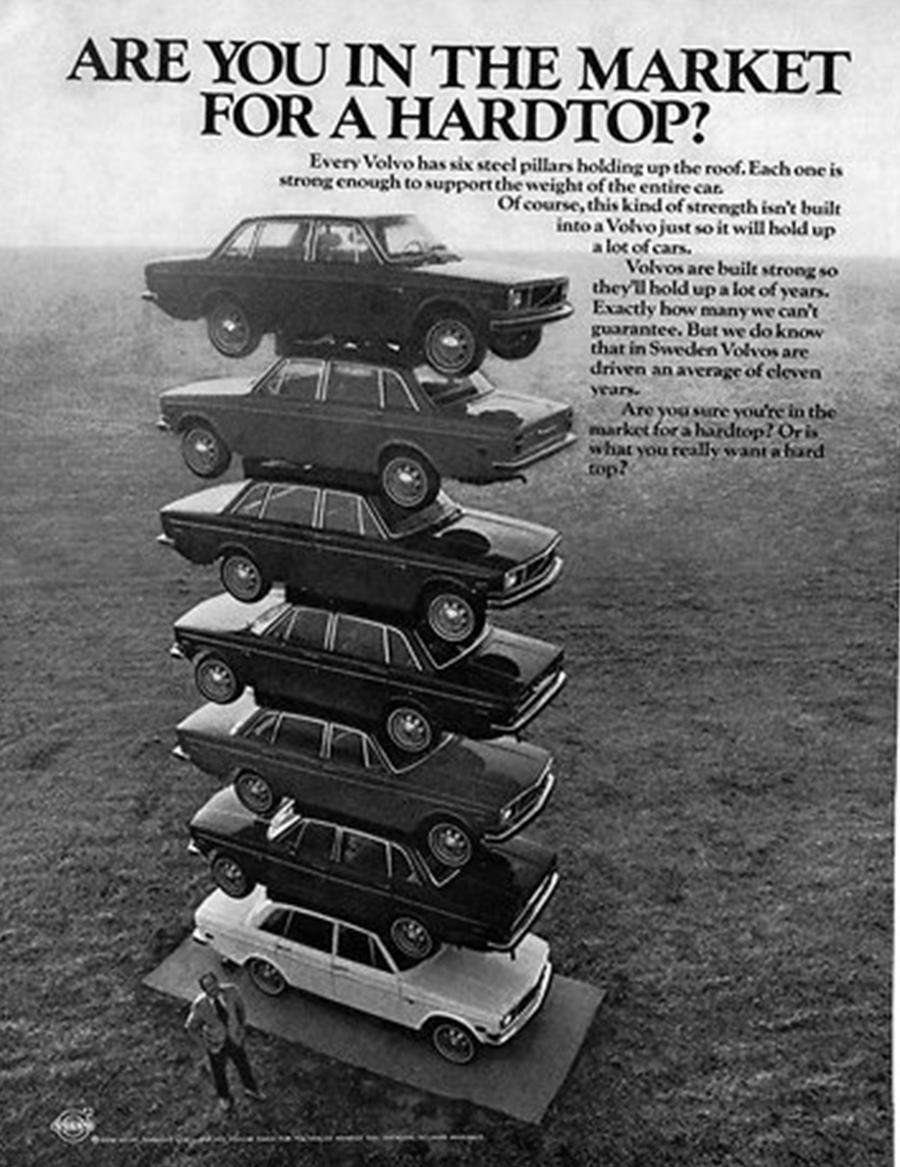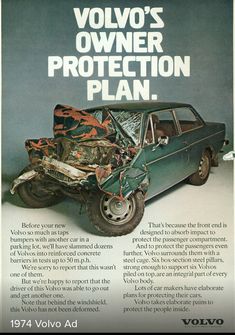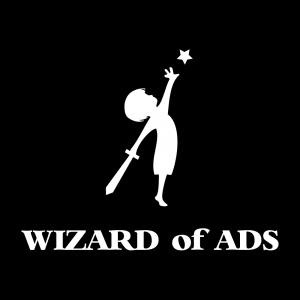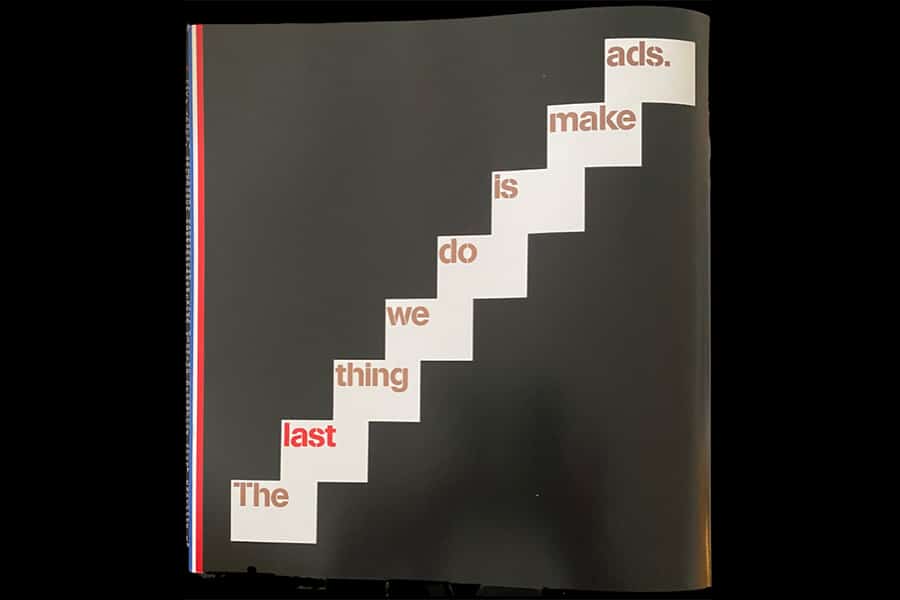It’s not uncommon for a new client to want to immediately get into:
a) What media we’ll use/recommend, and
b) What the ads will say or be like
And from the other side of the table, far too many non-Wizard copywriters and creatives want to jump immediately into making the ads.
They START the process with spit-balling clever ideas or gags — “what kind of ‘creative’ idea will we use?”
This is bass ackwards.
The last thing we do is make ads.
That was a house “motto” for the famous Ali & Gargano advertising agency.* If you’re not familiar with them, check out my article on their style of Comparative Advertising.
At any rate, here’s the second most important reason why creators of effective advertising adopt this motto:
A great ad with a bad strategy won’t work
Check out this famous Nissan ad with G.I. Joe and Barbie that was created decades before Toy Story would ever become a hit franchise.
The ad features some real creative genius. But a non-existent strategy.
So the ad, along with the whole campaign of similarly creatively-inspired ads, failed to increase sales of Nissans.
If you jump to creativity or messaging and skip strategy, you are inviting doom.
Which brings us to the most important reason (from a messaging standpoint)…
Without an Uncovery, You CAN’T Make Powerful AND Effective Ads
OK, maybe you can, but only by stupid luck. Not by reliable, conscious, skill. But what do I mean by ads that are both powerful and effective?
For an example, check out this Volvo print ad:

Notice that while this ad isn’t nearly as “cool” as the G.I. Joe TV commercial, it’s still quite powerful.
But not only powerful, it’s also substantive. It’s got some “meat” to the message.
The truth is that had the G.I. Joe-style ad been for something like alcohol or cigarettes or jeans, it likely would have worked.
Because products or services that are mostly style can be sold with ads that are nothing but style. Style can be sold with style.
But substance needs to be sold with substance.
And there’s not a single fact or substantive claim in that G.I. Joe Nissan ad, is there?
 The Volvo ad is the complete opposite. It’s all about substance.
The Volvo ad is the complete opposite. It’s all about substance.
That high impact image isn’t there purely to entertain.
It’s there to dramatize the fact that Volvos are built with a high-strength steel roll cage, capable of supporting more than the weight of the entire car.
The ad writer had to have detailed and profound knowledge of the car. Otherwise, he couldn’t have created this profoundly effective ad.
And it wasn’t just a one-off ad. It was built on a campaign designed to promote the engineering and safety features of Volvos, as can be seen in this additional ad in the same campaign.
This is why this style of advertising (started by Ally & Gargano and continued by Scali, McCabe, Sloves) tripled US sales of Volvos.
Now listen to this radio ad.
Again, you’ll hear the great dramatization through the sound effects.
But the entire ad is wrapped around a fact:
- a child hit by a car going 40mph has an 80% chance of dying,
- while a child hit by a car going 30mph has an 80% chance of living.
That’s the reason that the speed limit is 30mph in residential areas and the real reason why drivers should obey that speed limit
Without the ad team digging for that fact, they’d never have created such a powerful ad.
Finally watch this Volkswagen ad
Again, this ad is practically the opposite of that G.I. Joe Nissan commercial.
It’s certainly entertaining enough, but it consists of two demonstrations (cutting the rope and floating) and four facts:
- Only small car with a sealed steel bottom
- Coated with 13 pounds of paint
- Even inside the door and other places you can’t see
- It’s so well sealed it floats
- It only costs $1999
All of these ads had great creativity, but it’s a different style of creativity from the Nissan ad. The creativity was used to sharpen the point, not to hide the fact that there wasn’t one.
They found a powerful way to dramatize the facts to make them hit home in the gut.
And here’s the important part:
Without proper research and Uncovery, the advertising teams would never have KNOWN the facts to begin with.
Because if you don’t know the compelling fact, you can’t dramatize it.
Most advertising creatives just want to work off of a brief. The client gets interviewed for an hour over the phone, then the account manager puts together a brief, and that’s all the info the creative gets.
Or worse, they get handed a set of “copy points” that they’re expected to turn into an ad.
They don’t do — nor are they expected to do — the hard research and investigation required to unearth and uncover the facts, relationships, and unleveraged assets that form the core of a great strategy, campaign, and ad.
They skip all that and jump right into selecting a medium and creating the ad.
If you’ve ever wondered why so many ads sound the same and say the same bunch of cliches and non-sense or use the same style of irrelevant creative whackiness, this is your answer.
They have nothing to say because they never bothered to research what to say to begin with.
 Wizard of Ads partners “think different.” And we do things differently.
Wizard of Ads partners “think different.” And we do things differently.
The very first thing Wizard of Ads partners do with a new client is spend two days at their business, talking to them, researching, and learning.
Then we spend the next month continuing to research and strategizing.
And only then do we craft the campaign, select the media, and make the ads, culminating in a Summary Retreat to present it all to the new client for approval.
Making the ads really is the last thing that we do.
But by then, we’ve:
- Collected the facts worth dramatizing
- Taken into account the competitive landscape, and
- Created a grand strategy to ensure our creativity drives results
If you want your ads to actually work, your ad guy has to do the work up-front.
That’s why making the ads is the last thing we do.
And, frankly, if it’s not the last thing your ad guy is doing, you need a new ad guy.
*P.S. Ally & Gargano’s other motto (which I also whole-heartedly agree with) is:
“What we say is as important as how we say it, and how we say it is as important as what we say.”
- Getting a Foot in the Door — Of Perception - November 27, 2025
- What Digital Superstars Know About Offline Advertising - November 17, 2025
- Unmistakable: A Tale of Two Boots and Branding Done Right - November 8, 2025

